Bidets make for a convenient bathroom upgrade that prevents water wastage while reducing toiletry costs.
Despite the variations in the installation processes between bidet types, bidets may not require professional help to be attached to a toilet seat. After all, freestanding bidets are quite similar to regular toilets in their construction.
Let’s look at how to install freestanding bidets and bidet seats, as well as factors to keep in mind during the process.
How To Install A Freestanding Bidet
1. Space Requirements
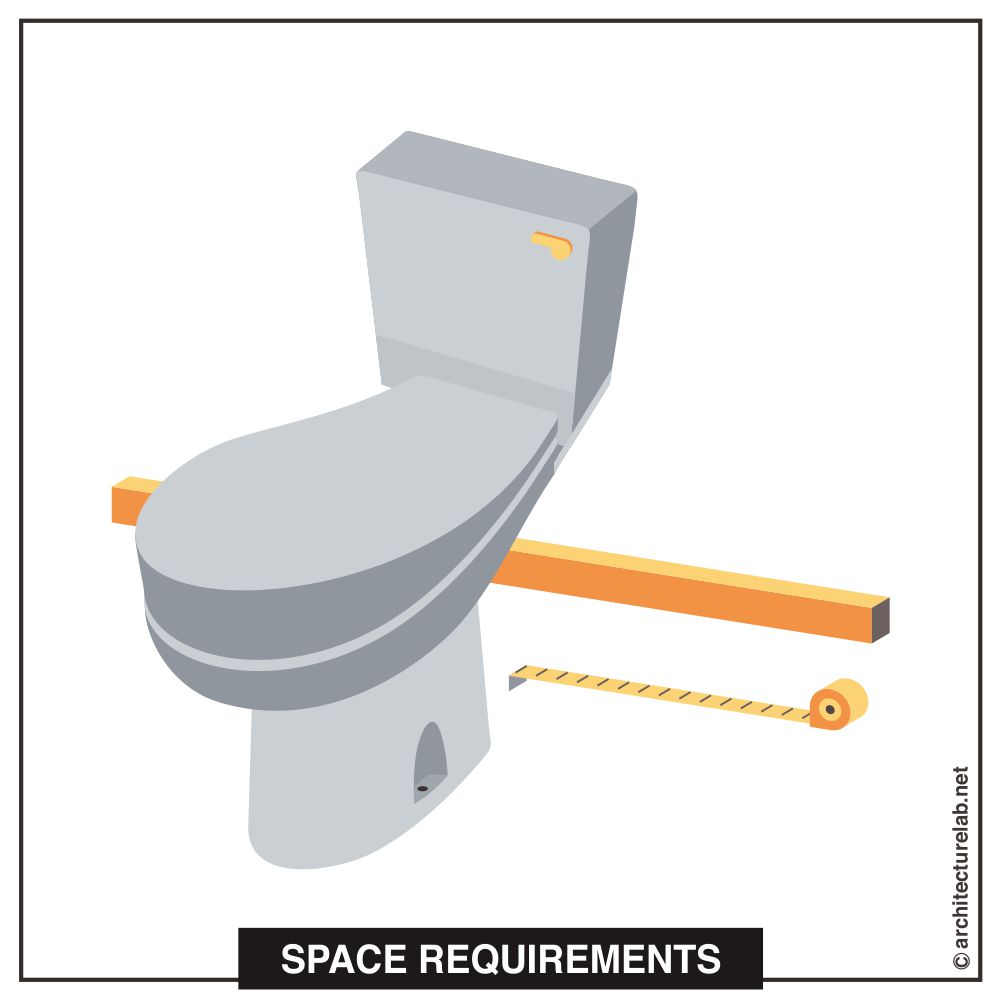
A freestanding bidet is about as large as a toilet, which means that you will need to reserve space for both seats in the bathroom.
On average, a freestanding bidet will require about 30 inches in width and four feet in depth. And depending on the type of freestanding bidet you choose, you will have to leave room in front of the seat.
On the one hand, a wall-mounted bidet requires less space since the fixture is affixed directly to the wall. These bidets can be a little tricky to install, as they come with special hardware that allows them to hang on the wall.
Lastly, floor-mounted bidets leave less room in front of it while being simpler to install. You only need to affix these units using hanger bolts, which means that installing them is more a matter of placement than precision.
2. Plumbing Requirements
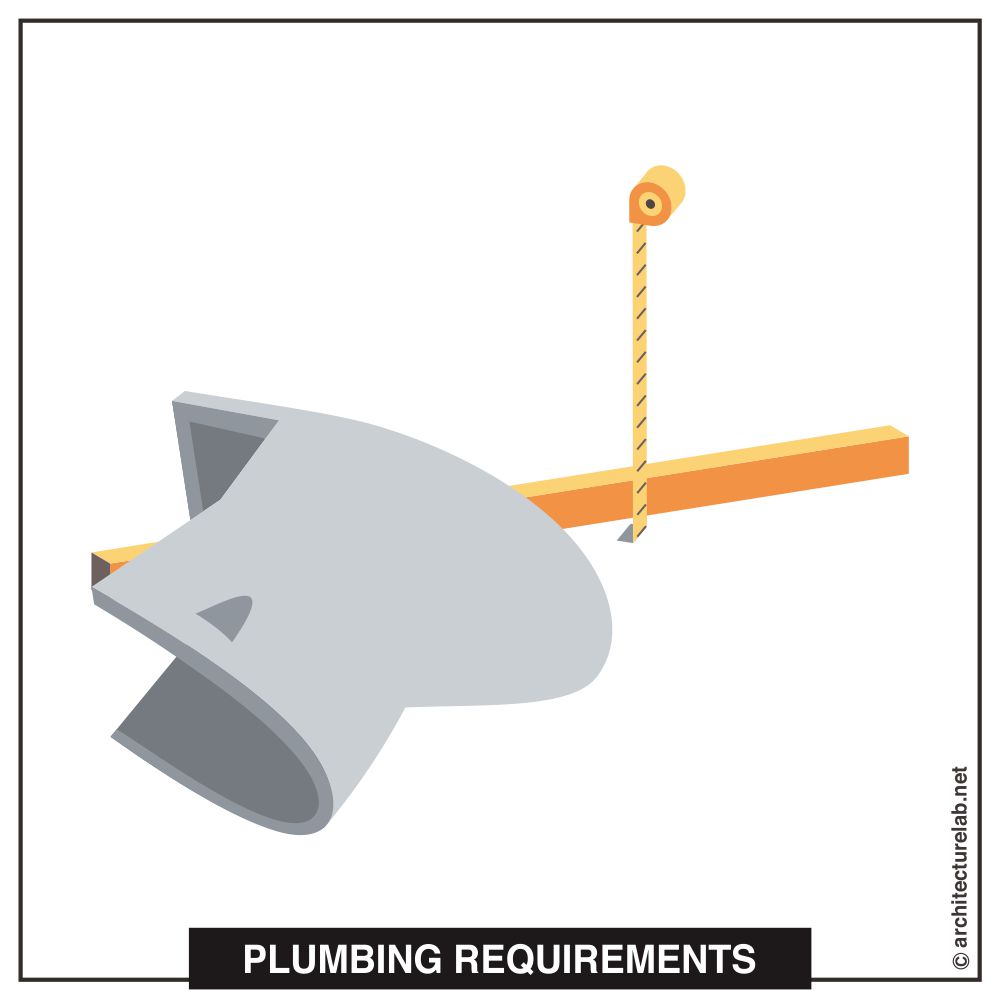
Usually, freestanding bidets come with mixing valves similar to showers to allow you to raise or lower the temperature of the rinse water. As such, they require access to the hot and cold-water supplies of your home.
You must also take care to install internal traps in the rough plumbing located below the floor to prevent sewer gasses from escaping into the bathroom.
Moreover, as per the plumbing code, you must use a vacuum breaker with bidet supplies during installation. This breaker keeps water from flowing back into the supply system, effectively preventing contamination. Note that not all bidet models include it, so it’s best to check the product specifications before purchase.
And finally, since bidets are designed solely for rinsing instead of disposing of solid waste through the waste line, they require drains that are 1-½-inch in diameter. This is half the size of a typical toilet drain assembly and closer to that of a shower, bathtub, or sink.
3. Tools Required
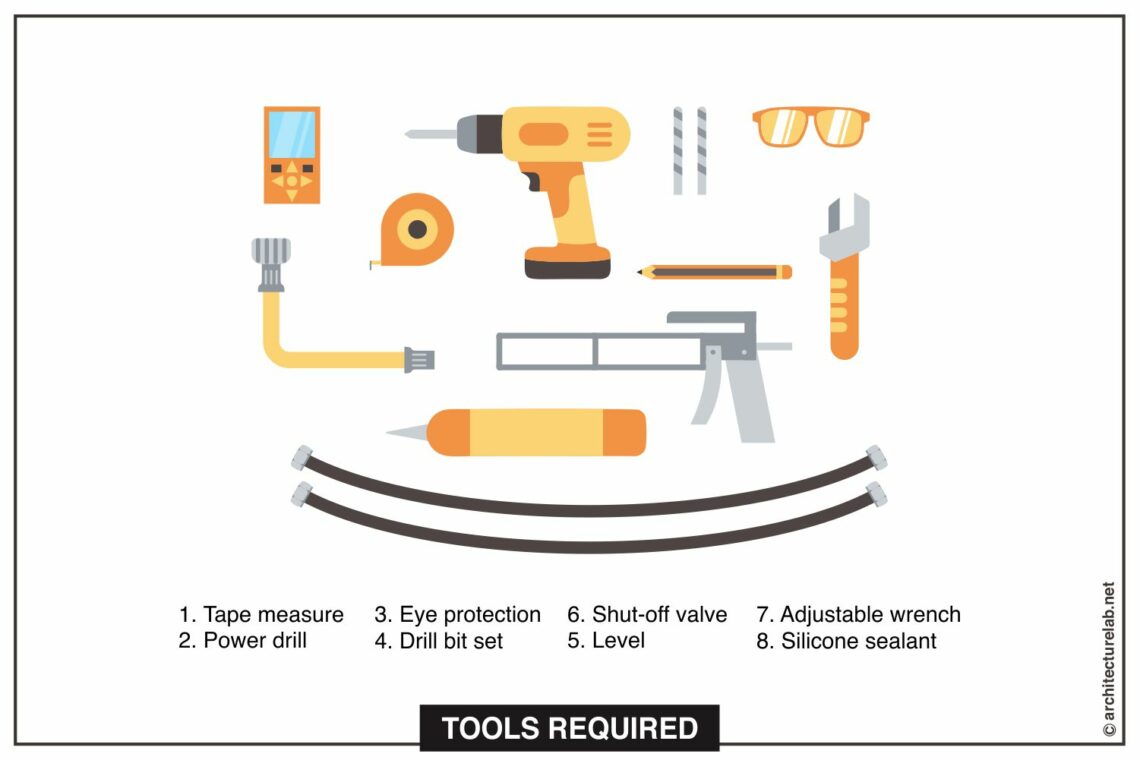
To install a bidet, you will need the following:
- Tape measure
- Power drill
- Adjustable spanner or crescent wrench
- Drill bit set
- Spirit level
- Eye protection
- Shut-off valves
- Silicone rubber sealant
Most of these tools can be found in a typical drill set, making them quite readily available. That said, if you don’t own these pieces of equipment or materials, you may easily find them at a local hardware store.
4. 5 Steps To Install A Freestanding Bidet
Step 1: Assemble The Bidet
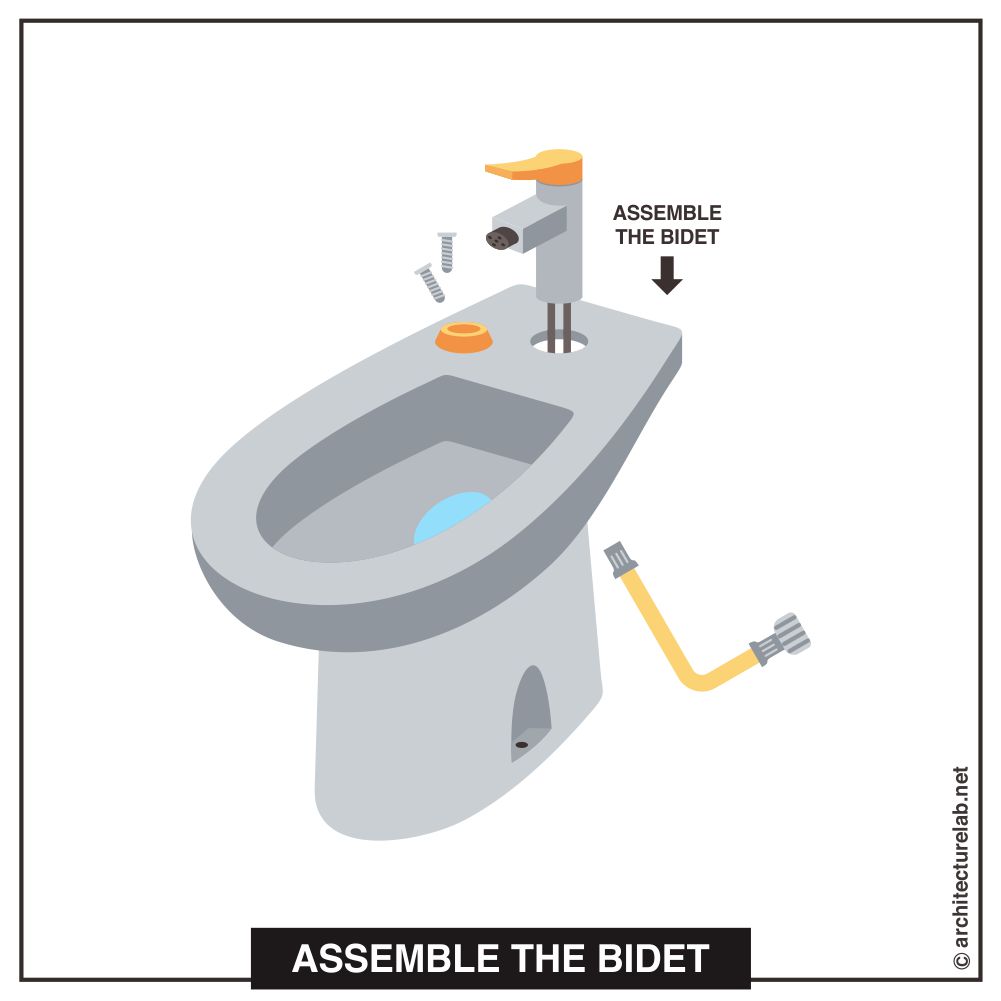
Firstly, attach the drain fittings and the faucet to the bidet to begin assembling it. This can vary based on the bidet model, so be sure to glance at the instruction manual before proceeding to the next step.
Step 2: Prepare To Mount
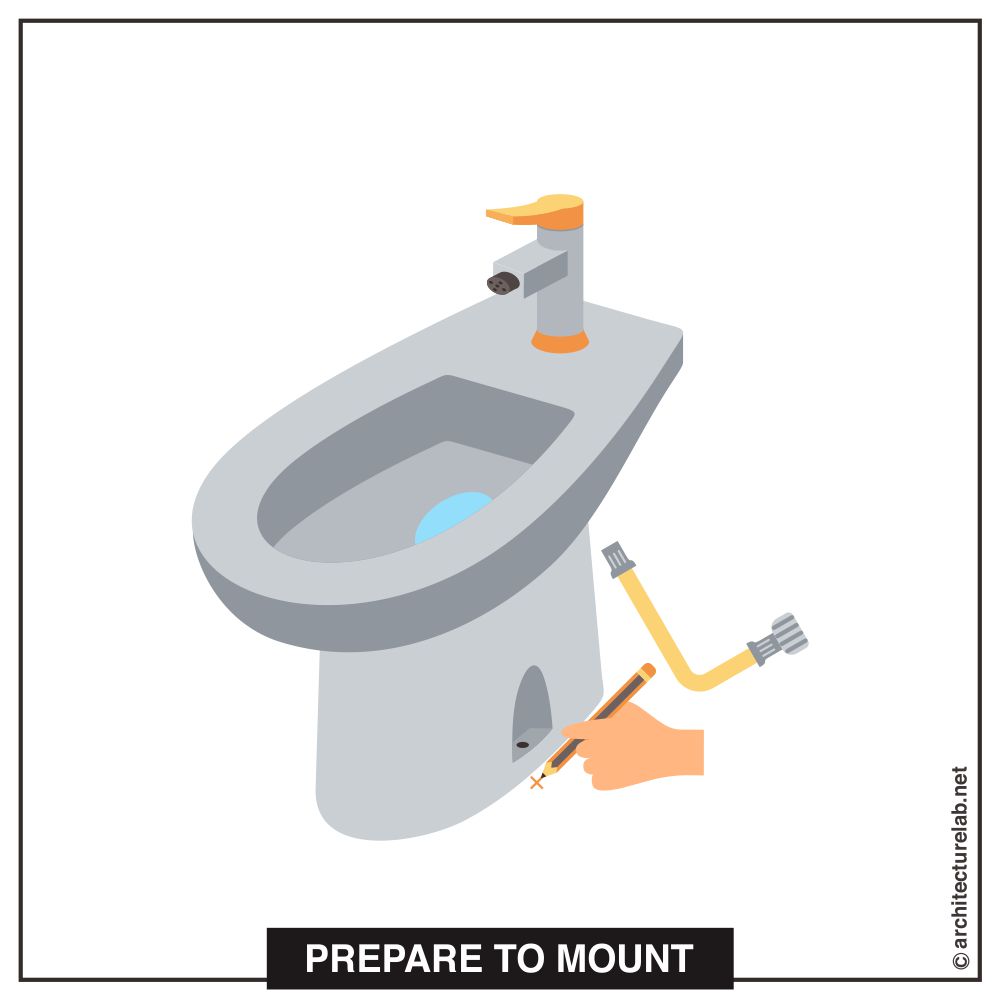
If you have a wall-mounted bidet, align the seat to the wall and mark where you will be placing the mounting frame using a pencil.
Tip
For a floor-mounted bidet, mark the spots on the floor for the special frame instead.
Step 3: Mount The Bidet
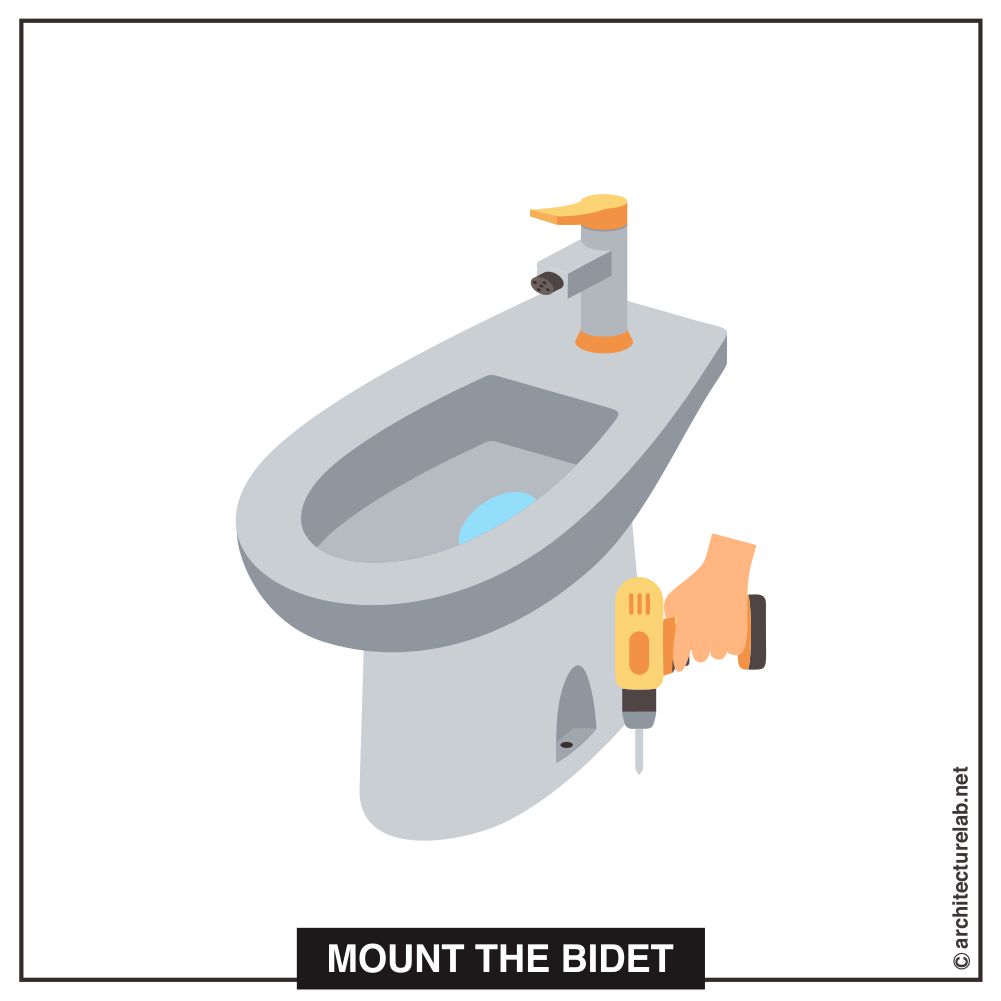
Drill mounting holes into the spots marked in the previous steps for hold-down bolts. Be sure to keep the power drill steady as it pierces through your bathroom wall or floor.
Once you have prepared the bolt holes, align the bidet to the bolts and attach them. Here, you can use a spirit level to confirm if the bidet is at an angle or not.
Now, this can be a little challenging since you will need to support the bidet from above while attaching each nut and bolt. So, feel free to ask a family member or a friend for help with this step.
After you attach the bidet successfully, affix a plastic cap over the bolts to protect them from moisture.
Step 4: Apply Silicone Sealant
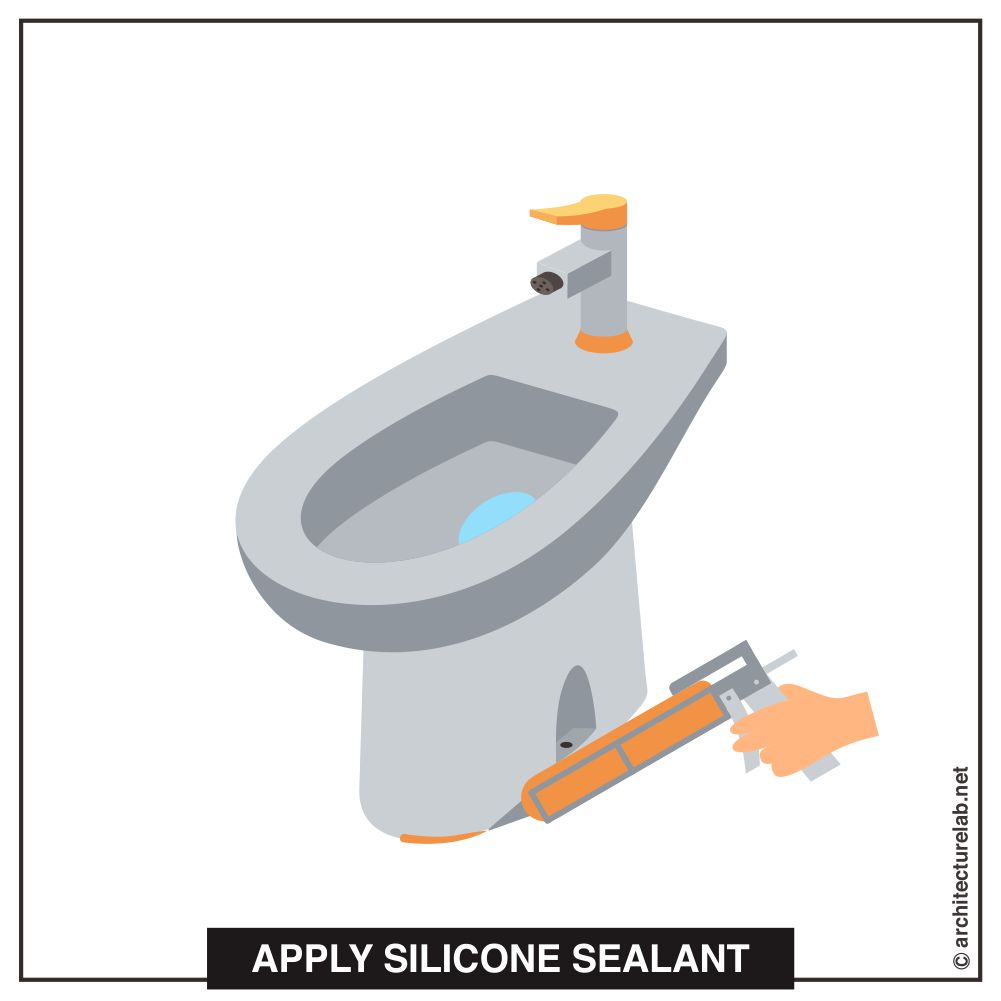
Use a silicone sealant at the base of the bidet to form a waterproof seal. You may make multiple passes with the sealant to ensure it has been applied evenly around the base.
Step 5: Water Supply And Drain Line Connections
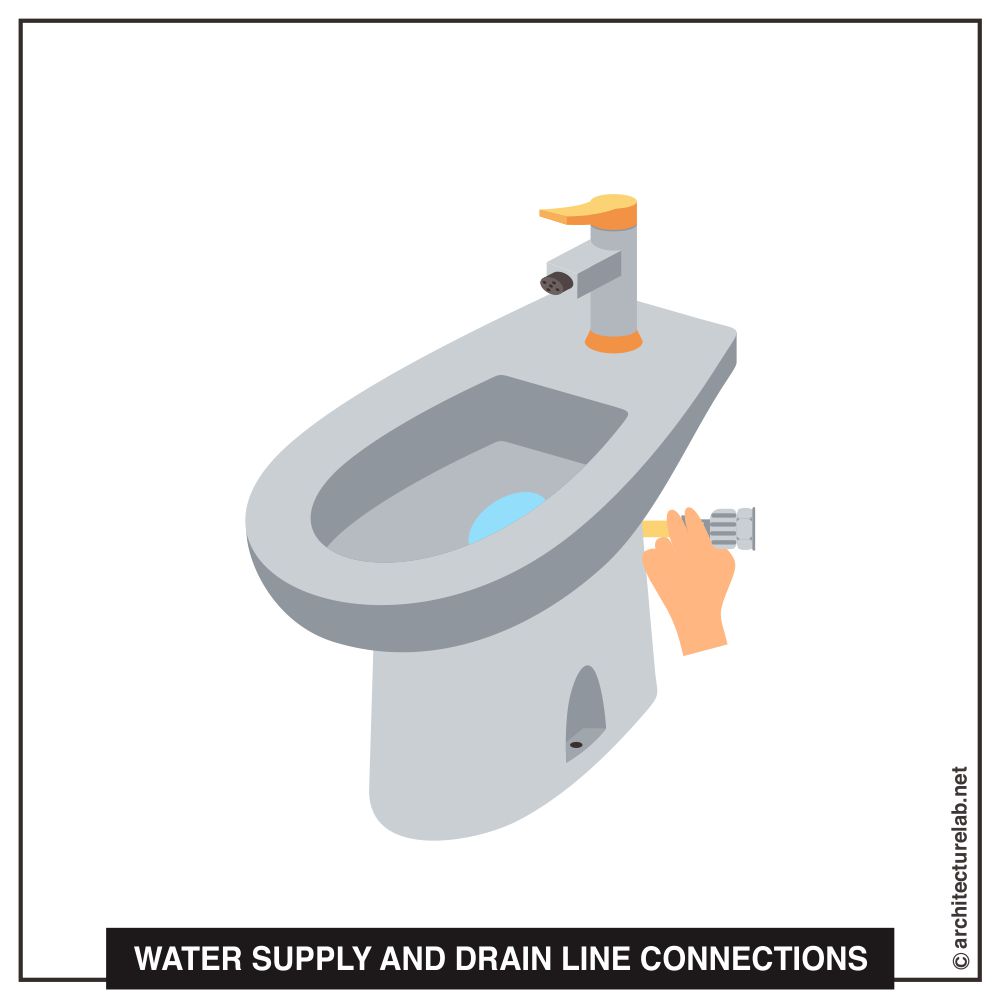
Connect the bidet with the cold and warm water supply pipes, shut-off tap, and drain line, and check for leaks by turning each of them on. Test the hot and cold-water mixing capabilities of the built-in mixer and make adjustments as necessary.
With all the plumbing connections made, your bidet is ready to be used.
Tip
Should you find a leak, you can use the sealant to create a watertight seal quickly. Be sure to turn off the cold and warm water supply valves when you do.
How To Install A Bidet Toilet Seat
Bidet toilet seats are add-ons for an existing toilet seat, requiring very little space and only a handful of plumbing adjustments. These are often favored for their versatility, particularly if a bathroom doesn’t have room for a freestanding bidet.
Personal preferences aside, there aren’t many practical considerations to be mindful of while choosing and installing a bidet toilet seat. These features result in several variations on the traditional bidet, such as the Bio Bidet or a bidet shower.
Some of the features offered by bidet toilet seats include the following:
- Adjustable nozzle
- Heated seat
- Remote control
- Air dryer
- Self-cleaning nozzle
- Oscillating nozzle
- Economy mode
- Water heating bidet sprayer
- Motion sensor
Let’s look at the installation process of a bidet toilet seat with a do-it-yourself bidet converter kit.
Step 1: Remove The Old Toilet Seat
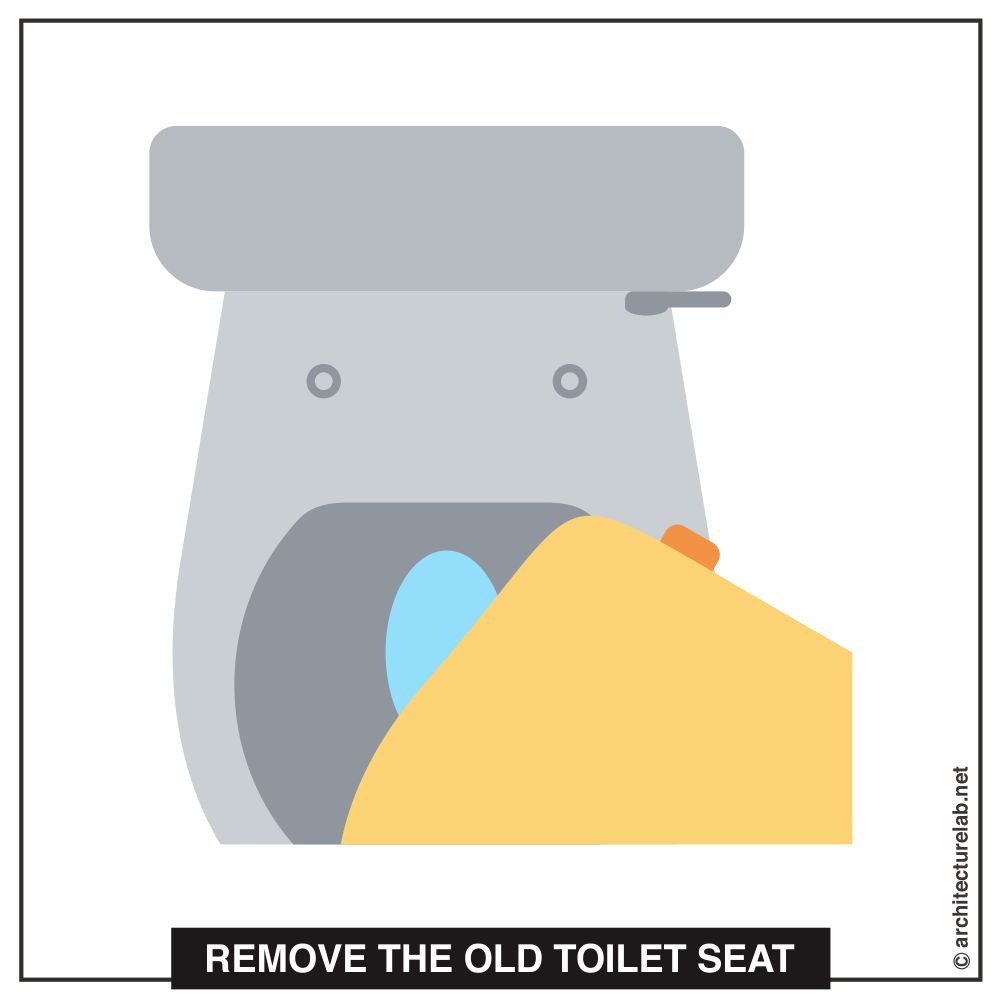
Certain bidet toilet seat models can replace the existing toilet seat. Using a screwdriver or adjustable pliers, remove the mounting bolts on top of the toilet rim.
Clean the rim using a scrubbing brush and toilet tank cleaner, after which you can move on to the next step.
Step 2: Shut Off The Water Supply
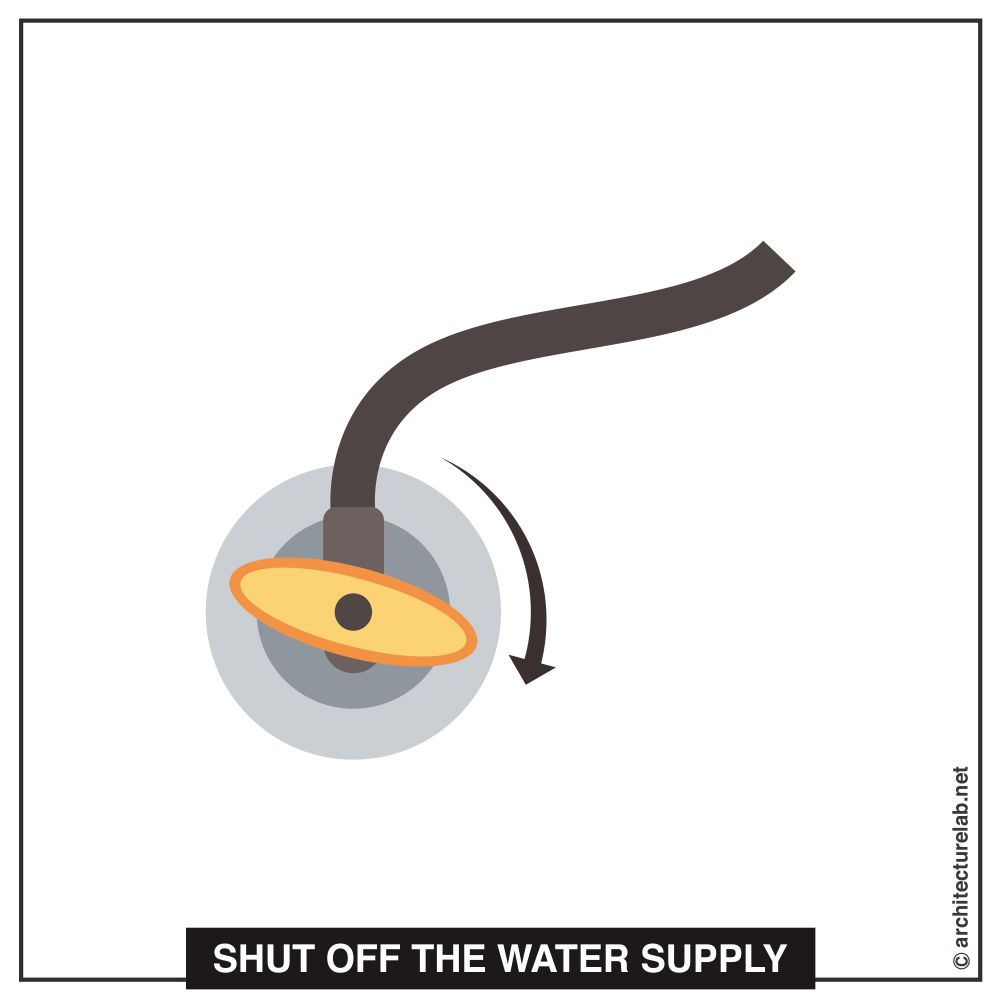
Find the water shut-off valve behind the toilet and turn it clockwise to shut off the water supply valve. Be sure to get rid of any remaining water in the toilet bowl by flushing it as well.
Step 3: Install The T-Valve
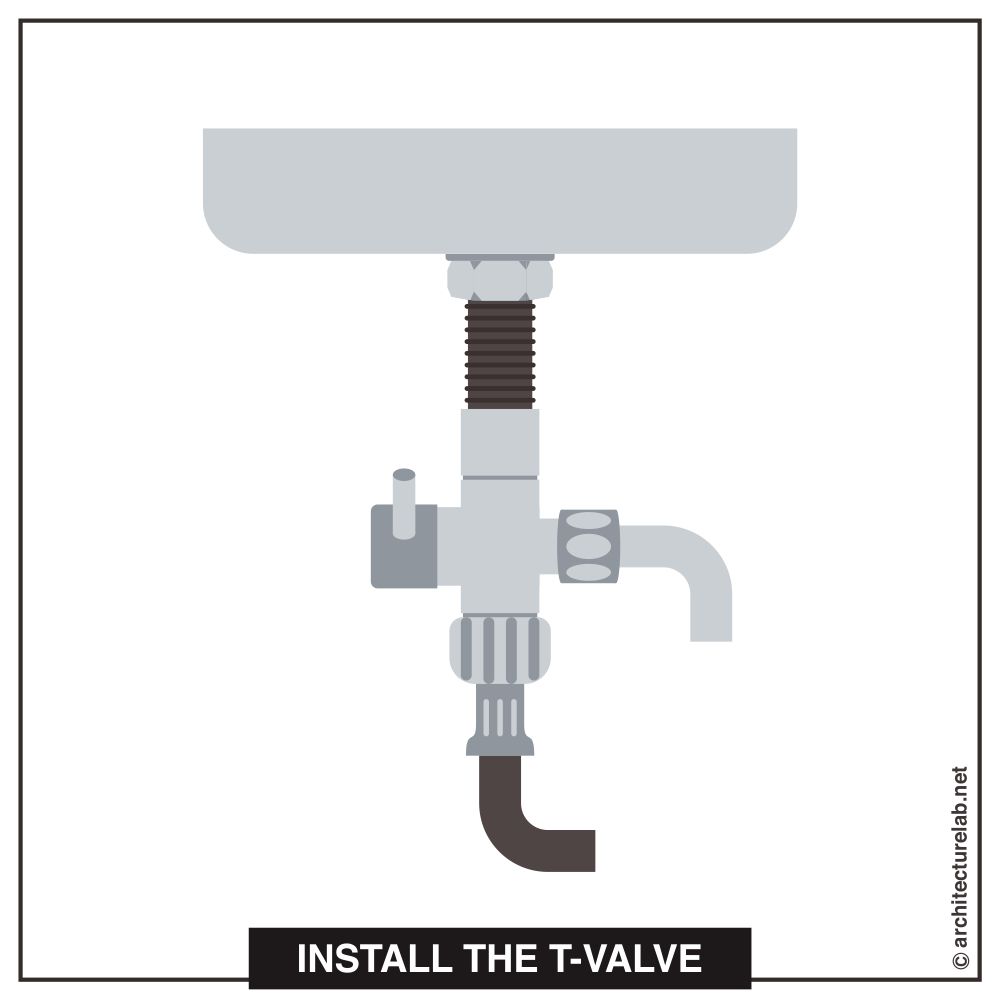
The primary function of a T-valve is to switch the water supply between the toilet and the bidet toilet seat. It installs directly to the bottom of the toilet tank, connecting both the toilet and the bidet toilet seat to the same water supply hose.
Start by unscrewing the supply hose from the toilet tank and screwing the T-valve in its place. After this, attach the water supply hose and bidet hose to the T-valve to finish installing it, and clean up any spills using a towel and bucket.
Step 4: Affix The Mounting Plate
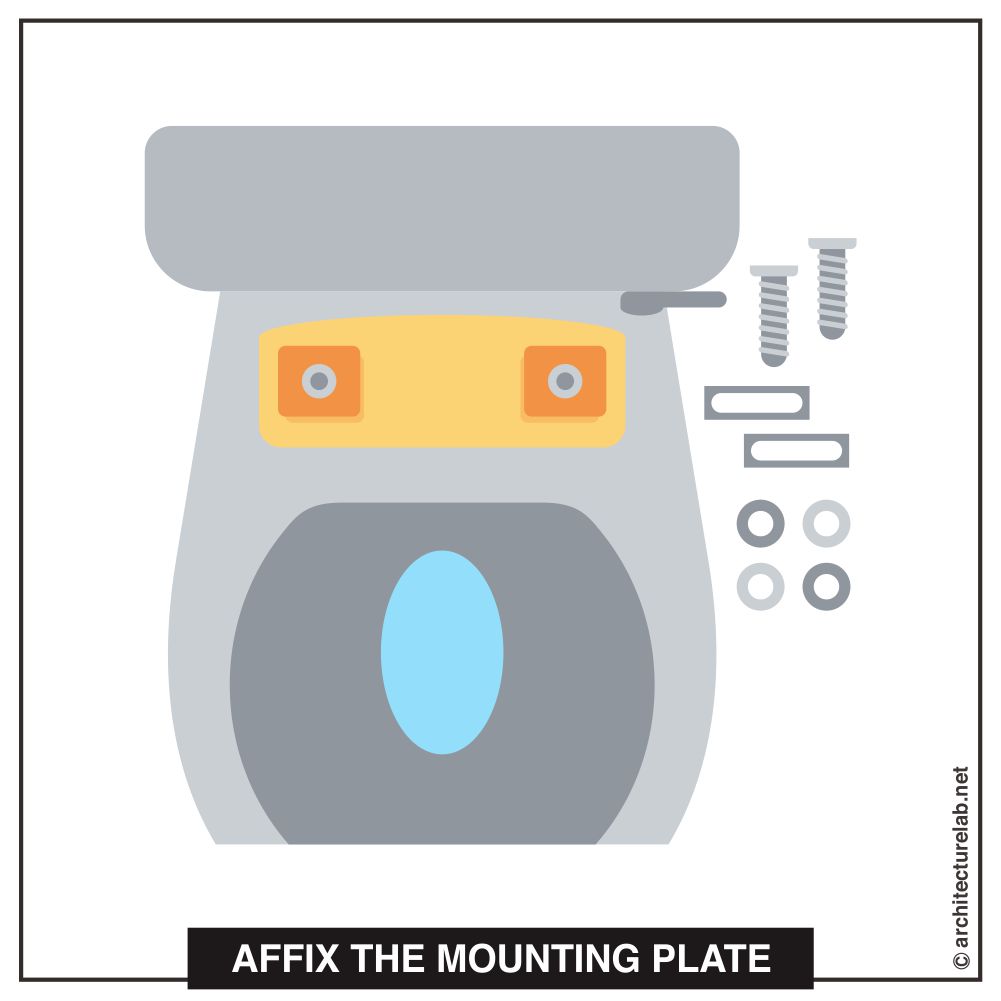
You can attach the toilet seat bidet using the included mounting plate. Align it over the screw holes on the toilet rim and carefully attach the brackets.
Following this, you can use an adjustable wrench to tighten the mounting bolts. With this, your toilet seat bidet is ready to be mounted.
Step 5: Mount The Bidet Seat
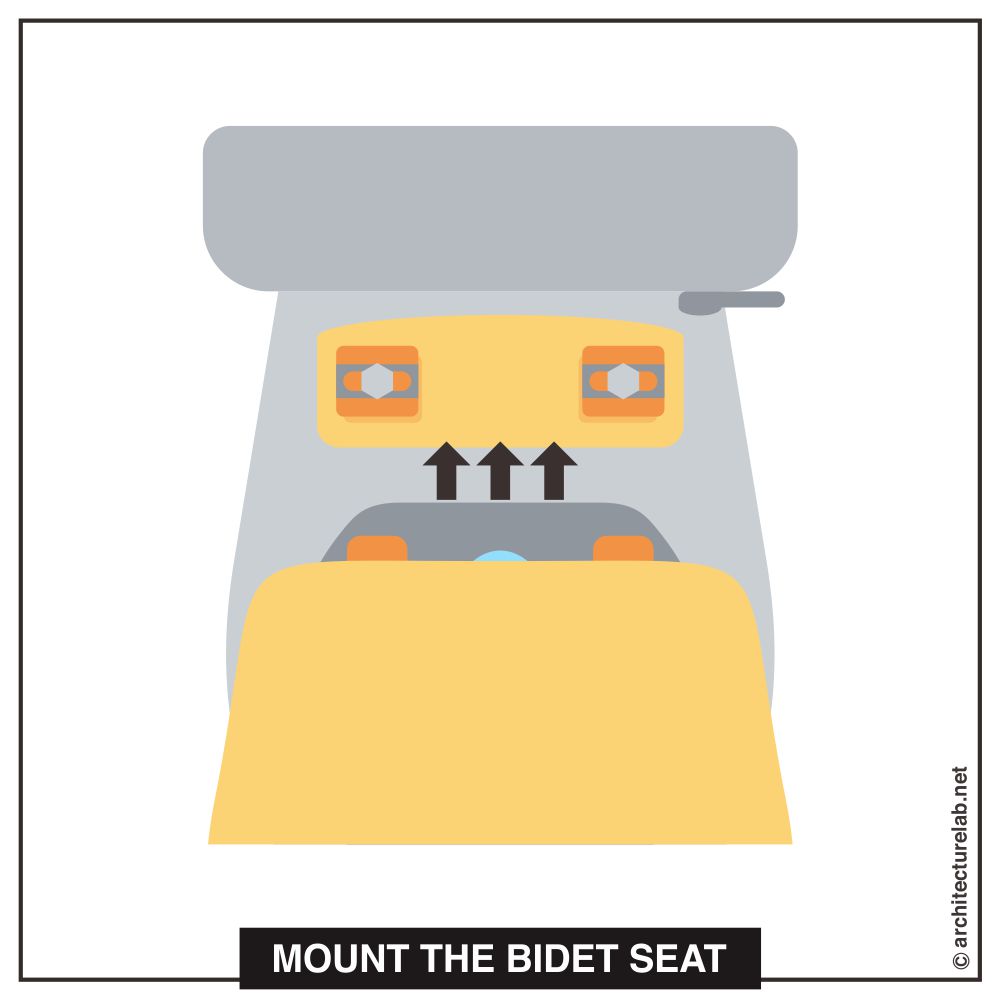
The new bidet seat can be mounted by sliding it onto the mounting plate. Slide the bidet seat over the plate carefully and adjust its position accordingly until it clicks into place.
For an electronic bidet attachment, you will also need to connect it to an electrical outlet. Be sure to use an extension cord to connect to a grounded GFCI outlet if needed. Alternatively, you may contact an electrician to have a residual-current device, AC power plugs, and sockets installed closer to the bidet seat.
Check all water connections for leaks, and test the bidet seat to see if it functions as intended. You may also consider running bidet attachment features like the self-cleaning nozzle before using it for the first time. If you find no issues with the bidet seat, it is ready to be used.
Do I need professional help to install a bidet?
Typically, you will not require any professional help while installing a bidet seat. That said, there can be a few instances where you may need to call a plumber.
For instance, if you need to have hot and cold water supply lines installed, a professional’s help is essential. There is a high risk of something going awry if someone inexperienced handles complex plumbing lines affairs.
Is using a bidet better than using toilet paper?
On nearly all fronts, a bidet is better than toilet paper. Using one will reduce both your toiletry costs and water bills and offer better cleanliness for your nether regions.
Moreover, bidets are more environmentally friendly, consuming less paper and less water per use than toilet paper. And for those with mobility issues, bidets can simplify the toilet-going experience, something that isn’t typically the case with toilet paper.
How long does a bidet last?
With proper maintenance, a bidet seat can last up to nine years, and a freestanding bidet can last about as long as a toilet seat. In some cases, a freestanding bidet can even last as long as 50 years if maintained properly.
How long does it take to install a bidet?
A bidet seat can take up to 30 minutes to install, even if you have not done so before. Such bidet models are designed to be quick and easy to install.
Freestanding bidets, on the other hand, can take a couple of hours to be ready for use. They are only slightly less complex than a toilet seat to install, which is why it can take you a while to install properly.
Final Words
Installing a freestanding bidet requires you to be mindful of a few factors, like the required space and plumbing considerations, before going through with it. The overall process isn’t exceedingly complex, requiring no professional help and provided that you are careful during installation.
And the same applies to a bidet toilet seat, albeit to a much lesser extent. What you must consider while installing a bidet toilet seat are the features it offers and what you will need to accommodate them.
With that in mind, a bidet attachment or seat can be a part of your bathroom in a matter of minutes.


